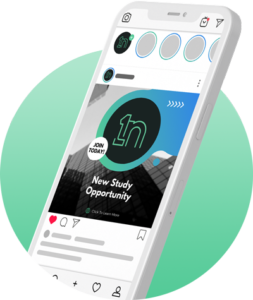
6 Useful Digital Metrics to Track the Effectiveness of Your Online Clinical Enrollment
Filling your clinical trial with ideal candidates as fast as possible is the destination. But getting there requires a compass, a map, and some helpful guideposts along the way. That’s patient recruitment—and all the strategy, goals, and metrics that come along with it. Strategy charts the course. Goals keep everyone headed in the right direction. Metrics tell you whether you should keep going straight or if you should have hung a left at that last fork in the road.
It’s critical that clinical researchers and patient recruitment providers are on the same page. Your site enrollment tracking may have some unique bells and whistles, but in the end you’re looking for one number—qualified patients per site per month.
Keeping track of these 6 baseline metrics can give your study team a heads up before enrollment is suffering.
The Importance Of Knowing Healthcare Industry Benchmarking Statistics
Before you begin setting goals, it’s important to know the industry standards for each key metric and how well similar ads perform in the healthcare industry. For example, according to a 2023 report from WordStream, the average cost per click was $1.32 for healthcare-related ads and an average click-through rate of 0.83% (meaning you can expect about 83 clicks out of every 10,000 people who get shown an ad).
Bounce rate
Bounce rate refers to the percentage of visitors that leave a webpage without taking an action—like clicking a link or submitting a form. If this number is high, there’s a disconnect between what your ads are promoting and the landing pages that visitors are clicking on. The good news is you’re attracting an audience. The bad news is the audience doesn’t like what they’re seeing when they click on the ad. It could be a simple fix like changing the URL in the ad or changing the text on the survey or questionnaire. If that doesn’t work, you may want to look into modifying the audience that you’re targeting.
The average cost of acquiring a qualified patient
This is the very top of your patient recruitment funnel. If you’re seeing the number of qualified patients continually increase (and the average cost of acquiring a qualified patient decrease) you’ve effectively targeted your ideal participants. But if this is where you’re struggling, you’ll need to make changes. Experiment with different visuals, tweak the text, and modify the audiences to which your ad is being shown—anything to ensure you don’t waste more time and resources going after the wrong patients.
Cost per patient enrolling in a clinical trial
Qualified patients are important, but patient recruitment is about filling clinical trials. If you’re seeing a lack of conversions and qualified patients aren’t enrolling, it might have something to do with how you’re attracting participants in the first place. You might need to improve something in your pre-screening and screening processes. Or maybe there needs to be more frequent communication as a patient gets closer to providing informed consent and enrollment. The average cost of enrolling a participant is going to be high at first, but as the patient recruitment campaign goes on this number will go down.
Average time from pre-screening approval to consent into a clinical trial
Breaking down your funnel and having well-defined goals for each step is going to help you identify exactly where you’re having success and what needs some improvement. And while it’s important to know the amount of time patients are spending between each step of the patient recruitment process, the most important metric is the average amount of time a participant is spending from the time they finished pre-screening to when they submit their informed consent for a clinical trial. Choosing to enroll in a clinical trial is a patient’s biggest decision—often involving family, friends, and their personal doctor—and with informed consent means the patient’s approval to release their personal medical information.
Average cost per click (CPC) on digital ads
Knowing the average cost of a click in your social media efforts (like Facebook and LinkedIn) and search advertising (including Google and Bing) is essential for evaluating the cost-effectiveness of your patient recruitment campaign. If you compare your average cost per click with benchmark industry averages and it seems high, modify your ad to make it more relevant to your target audience. Avoid broad ad groups that cover multiple keyword groupings and instead focus on creating several highly targeted ad groups.
Referral sources for qualified patients
Identifying the referral sources for your patient recruitment campaign is crucial because it helps you understand where your traffic and leads are coming from. You can adjust your budget and put more resources into a referral source that’s overperforming, identify weaknesses in your overall campaign, and learn more about your target audience for the future.
1nHealth: Improving patient recruitment and filling clinical trials
At 1nHealth, our patient recruitment is measured, strategic, and always improving. That’s because we consistently review our results and see where we can get better. Our mission is to advance human health by filling up research studies faster than anyone thought possible, while being great humans to clients, to each other, and to patients around the world.
Ready to learn more about how we can help you fill your next clinical trial? Click here for a free consultation today!
1nHealth on LinkedIn
Check us out using the icon above or get in touch with our VP of Business Development Steve Wimmer if you want to learn how 1nHealth can help save your deadlines.

